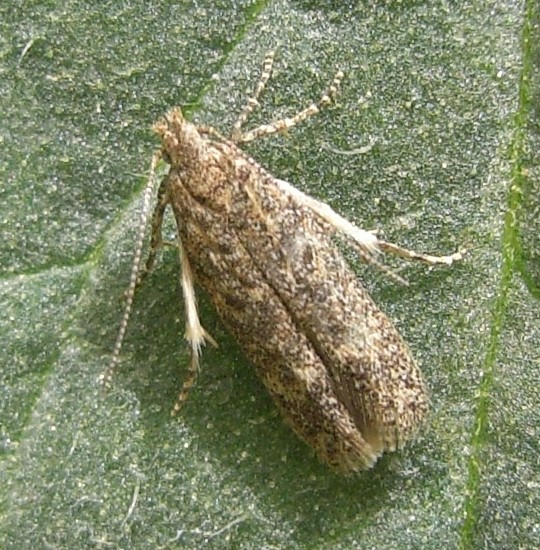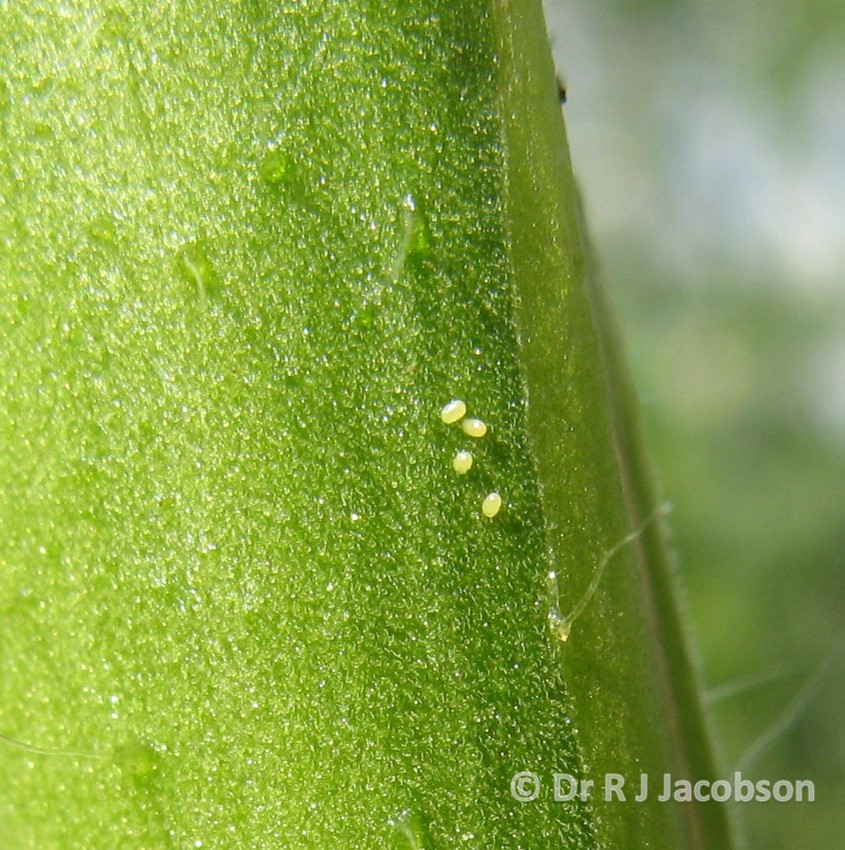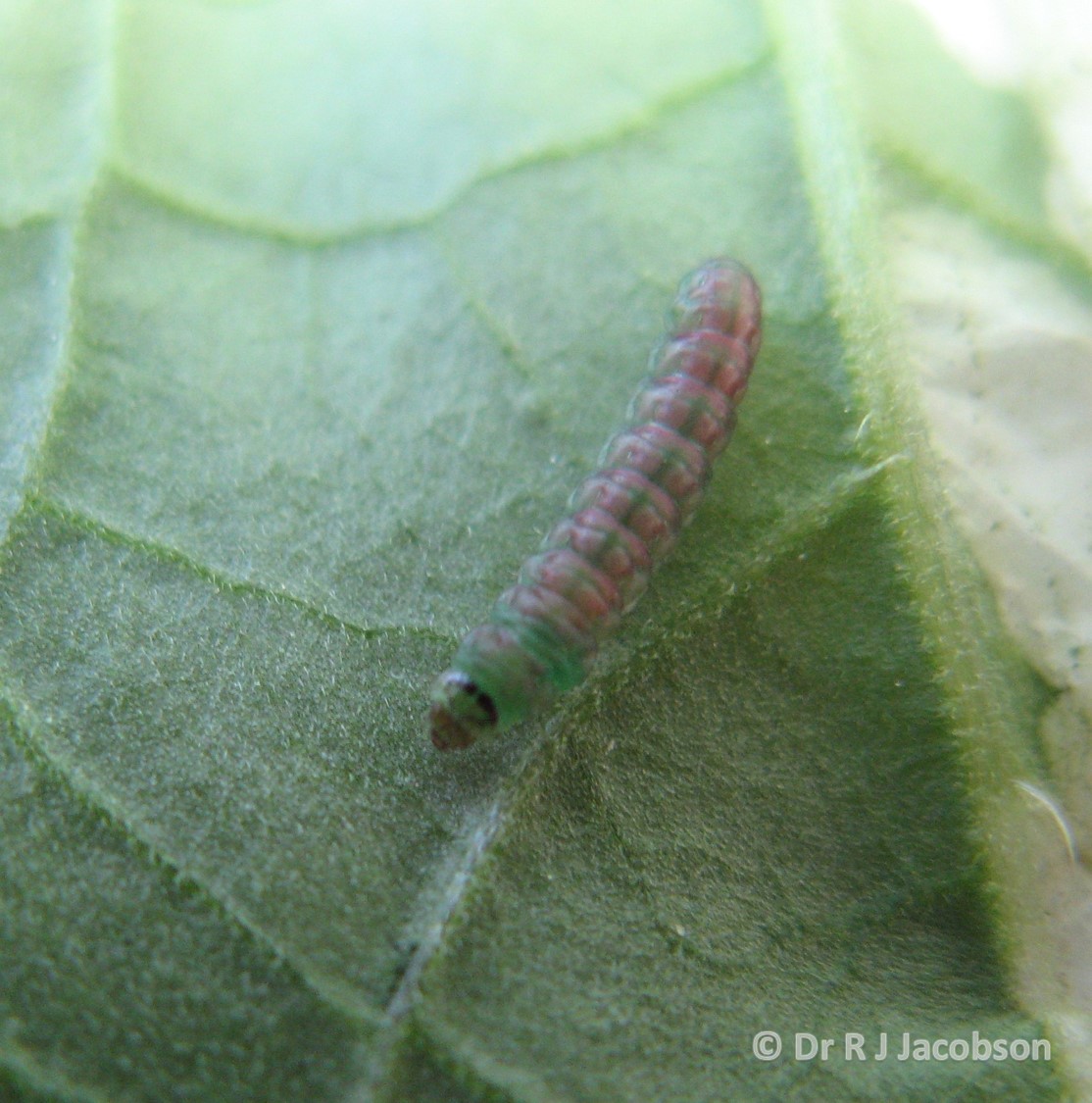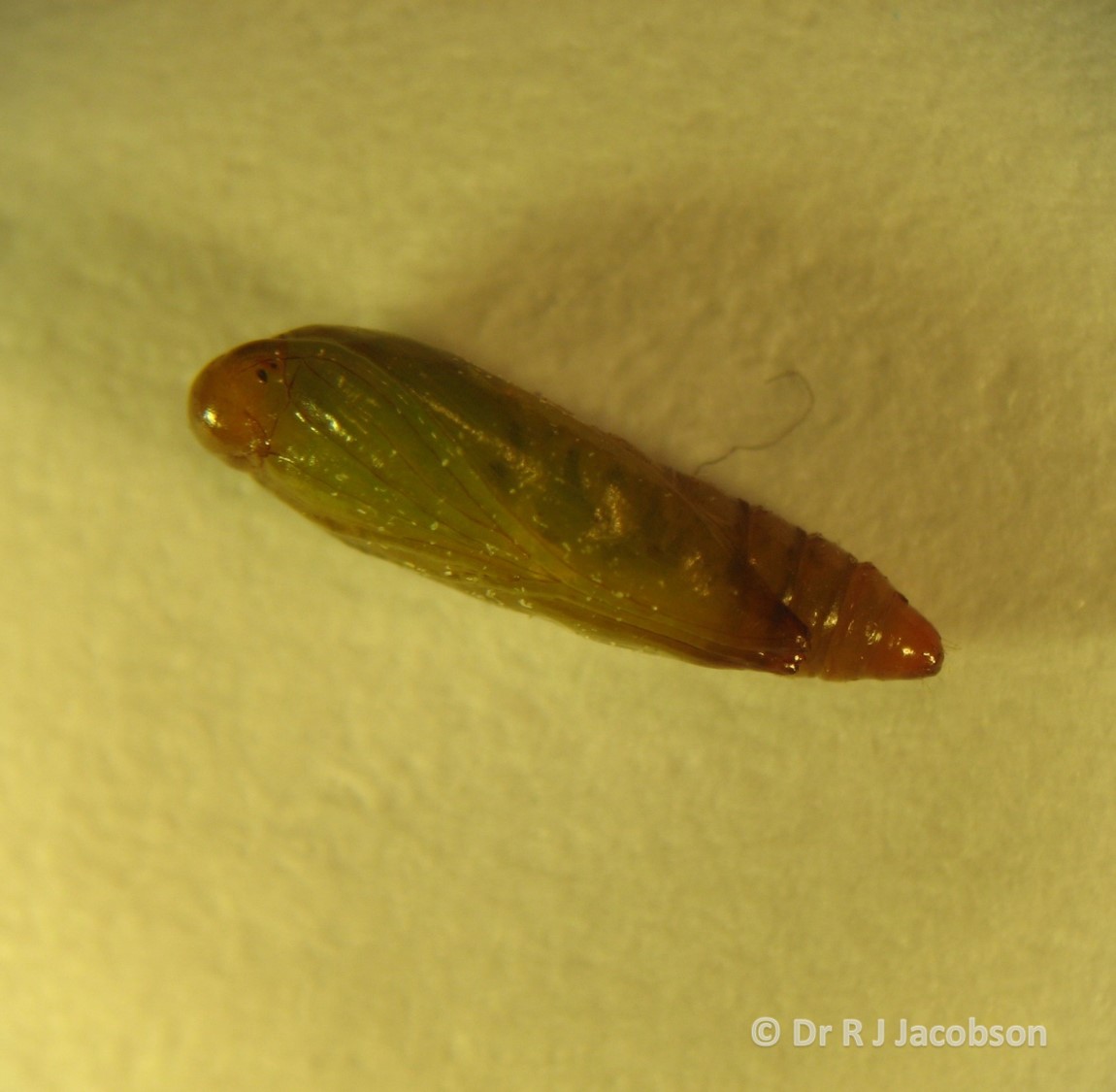Please click here to access the main AHDB website and other sectors.
- Home
- Knowledge library
- Tuta absoluta: Biology and behaviour
Tuta absoluta: Biology and behaviour
Tuta absoluta’s life cycle and behaviour are ideally suited to UK tomato crops where conditions are close to optimum for their development and population growth. Read on to learn more about their life cycle.
Back to: Biology and control of Tuta absoluta in tomato
How are Tuta absoluta suited to UK tomato crops?
Tuta absoluta have four life cycle stages: adults, eggs, larvae and pupae. The most favourable temperatures for development through the whole cycle are between 19°C and 25°C, which is consistent with average daily temperatures in tomato crops in the UK for much of the growing season.
How long does it take them to develop?
Under these conditions, development from an egg to an egg-laying adult takes about 3–4 weeks. The development rate declines below these temperatures and ceases at 10°C. Higher temperatures are also detrimental but are unlikely to be lethal even during the hottest UK weather.
Cuthbertson et al (2013) concluded that UK glasshouse conditions were very favourable for this pest. It is estimated that Tuta absoluta can complete 10–12 generations in a conventional season tomato crop and 12–15 overlapping generations in an all-year-round tomato crop, with supplementary lighting during the winter months.
Adults
Adult Tuta absoluta are 6–7 mm long and have grey-brown speckled wings, which are folded along their back while at rest. The antennae and legs are relatively long and ringed with black and brown bands.
Life span
Female longevity varies with temperature but is about 17 days at temperatures commonly experienced in UK tomato crops. During that time, a female can lay about 260 eggs.
Sex pheromone
The female produces a sex pheromone to attract males, which has been exploited in monitoring traps and as a control measure.
Tuta adult

Image © Dupont.
Eggs
Eggs are very small (<1 mm) and are laid on the underside of leaves and stems. They are white at first, becoming yellow as the embryo develops and almost black at maturity.
Egg development time
At fluctuating temperatures between 18°C and 23°C the eggs hatch in about three days.
Tuta absoluta eggs on crop

Image © Rob Jacobson Consultancy Ltd.
Larvae
Young caterpillars
The hatching larva (<1 mm) is pale yellow and wanders on the leaf surface for a few minutes before starting to burrow. This is its most vulnerable stage. After a further 70 minutes it is usually totally encased within the leaf.
Grazing in plant growing point
Under some circumstances, which are not fully understood, young caterpillars migrate to the top of the plant and graze in the furled growing point.
Older caterpillars
There are four larval stages over a 15-day period at UK tomato-growing temperatures. As the larva moults and grows, it becomes green, with a darker band behind the brown head capsule. The fully grown caterpillar is about 9 mm.
A Tuta absoluta larva on a leaf

Image © Rob Jacobson Consultancy Ltd.
Pupae
Pupae are 6 mm, light brown, and the outline of the developing antennae and wings can be seen on the surface.
Pupation sites
The caterpillar usually leaves the plant to pupate and may be seen lowering itself to the ground on silken threads. Alternatively, it may crawl to a crevice in the structure of the glasshouse or, if it emerges from a fruit in transit, pupate within packaging material.
Cocoons
Occasionally, a larva may pupate on an open leaf or fruit, in which case it can produce a loose silky cocoon for protection.
Tuta absoluta pupae

Image © Rob Jacobson Consultancy Ltd.
Useful links
Find out about the tomato crop damage caused by Tuta absoluta
Learn about how to distinguish between leaf miners in tomato crops
Read the reports from the project Development rate of Tuta absoluta under UK glass conditions
Learn more about the population development of Tuta absoluta by reading this paper
Author
The content on this pages was authored for AHDB by Dr Rob Jacobson (Rob Jacobson Consultancy Ltd).
Topics:
Sectors:
Tags:

